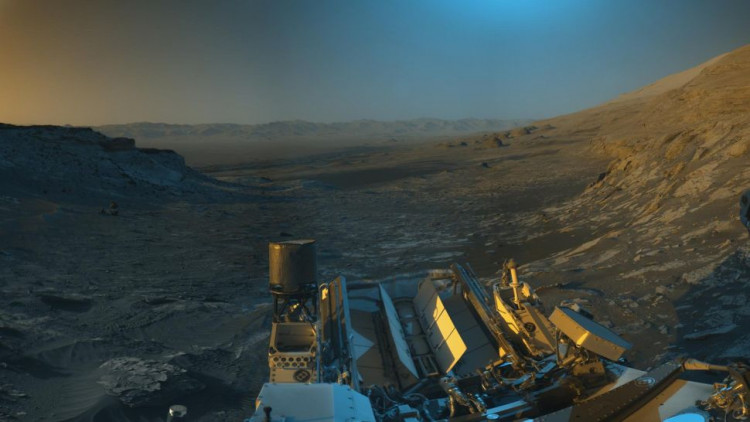NASA's Curiosity rover continues to roam the Martian terrain 10 years since it launched and it still delivers. The robotic explorer snapped some new images of the Red Planet and they are stunning.
Curiosity landed on the slope of Mars' Mount Sharp, or Aeolis Mons, which forms Gale Crater's center peak. With Curiosity's navigation cameras, mission crew members captured the grandeur of the natural Martian terrain.
However, the team "was so inspired by the beauty of the landscape, they combined two versions of the black-and-white images from different times of the day and added colors to create a rare postcard from the Red Planet," a statement from NASA's Jet Propulsion Laboratory said.
While all of this year's Mars images have been amazing in their own right, the one you see above is without a doubt one of the most stunning. Curiosity's latest image, called a "postcard from Mars" by NASA, was released on November 23.
The image is amazing enough on its own, but it took a lot of work behind the scenes to achieve this appearance.
"The two times of day provided contrasting lighting conditions that brought out a variety of landscape details," NASA explained.
The team merged images and colored the black-and-white photos. What you're seeing is an actual image of the Martian surface, with a dash of artistic interpretation thrown in for good measure.
Curiosity isn't the newest robot on Mars; NASA's Perseverance rover arrived on the Red Planet on Feb. 18. The robotic explorer has been investigating the Martian surface since it landed in August 2012, generating essential scientific data and beautiful imagery; the rover is still in good shape and performing well a decade later.
The rover arrived inside Gale Crater on a mission to investigate if the crater may have once supported life. The rover has discovered a lake and streams, and has reached the base of Mount Sharp, which stands 5 miles (8 kilometers) tall in the crater's center, two years into its mission.
The oldtimer reached a new zone on its voyage in August, one that scientists are interested in because of mineral-rich rocks and materials that could offer information about the planet's climate.
Curiosity and Perseverance are exploring diverse terrains on Mars, and their complementing observations have and will continue to substantially increase our understanding of a world that is so similar but at the same is very different to our home planet.




